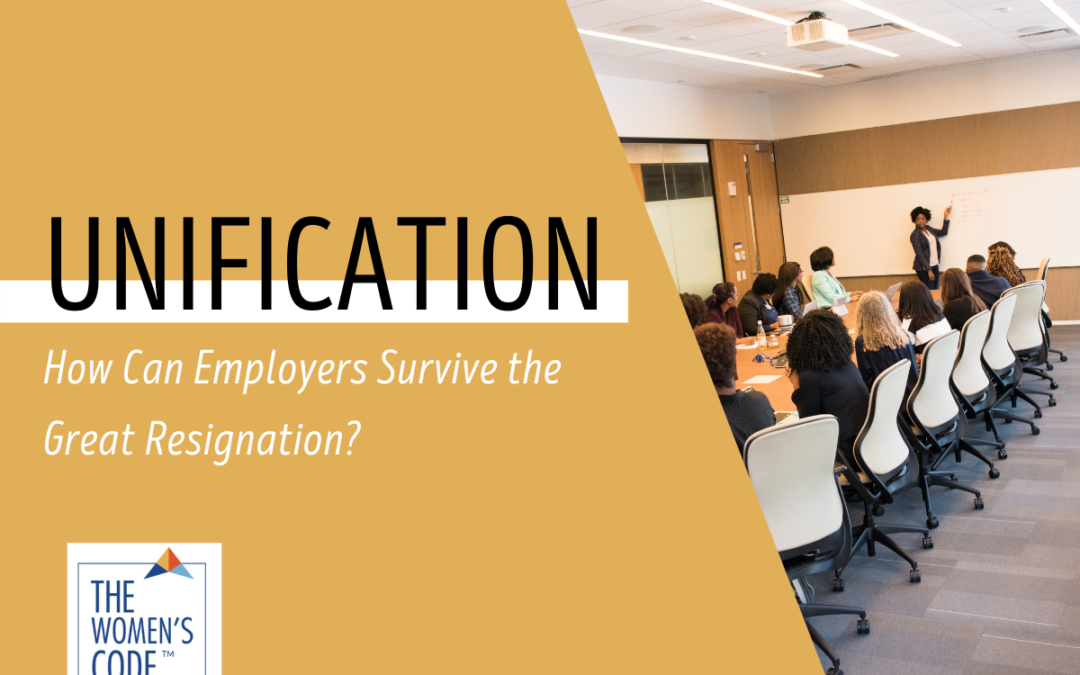Since the pandemic began, organizations all over the map are dealing with astronomical numbers in lack of engagement, low retention, and workers simply quitting their jobs. This new phenomenon has left many leaders scratching their heads and trying to assess what can be done to get their companies back to normal and fix this new personnel problem, unlike anything modern culture has faced.
What Is Causing the Exodus?
When the shutdowns began, many companies took advantage of the opportunity to make drastic cuts to their budgets. One of the quickest ways to make radical changes to the bottom line is by cutting the most expensive workers–the over 50 crowd, and that’s precisely what they did. With these employees gone, the budget problem was solved, but it created a new issue. Although removing these workers saved a chunk of payroll, the companies also lost the most knowledgeable people in their industries. But most companies were not worried–they assumed that they would entice young, fresh talent with incentives and “Freebie Fridays” and just like that–new, energetic workers would fill the office. But the pandemic changed things, and leaders now realize that recruiting and retaining their people looks extremely different in the new normal.
The Comforts of Home
The pandemic brought with it the new reality of working from home, an option that had rarely before been available to employees. Unlike the past, where people lacked the tools needed to work from home, everyone was equipped with every device required to be successful, which allowed companies to avoid the dip in productivity that many had predicted. With productivity in full swing, many workers realized that they preferred this new way of working rather than going to the office. For the first time, they found time to enjoy their families, stopped wasting time stuck in traffic, and actually got the chance to tuck their children into bed at night. Why would they ever want to return to the office? Herein lies the first problem–companies that want people to go back to the office are having a hard time because many will quit if required to return.
Cost of Living Reductions
Working from home also had another consequence; people migrated away from big, unaffordable cities like Los Angeles, New York, San Francisco and found more affordable places to live. These moves resulted in having much larger homes for much less money. Suddenly, families realized that with the cost of living so much lower, they could live the lifestyle they enjoy on only one salary. Now, one person could work, and the other is free to focus on the family or perhaps work a part-time job. This has contributed to the resignation issue because businesses are now losing employees who will potentially be out of the workforce for a long time.
Need for Connection
When the more experienced workers lost their jobs to make a significant dent in the payroll, these companies hired many Gen Z employees. One common attribute of this generation of workers is their intense desire to be tied into a mission and vision. They have a sincere desire to believe in what a company stands for and connect to the organization. When they sense problems or feel disconnected, then they have no problem moving on. It is pretty difficult to keep a Gen Z employee when they sense issues in the culture because they have no trouble quitting a job they are uncomfortable with.
Building a Dream
Shutdowns also unleashed the entrepreneurial spirit in many people. Many entry-level workers could survive on unemployment and government stipends, and they used that time to advance themselves or research the dream of running their own business. This time away from their jobs with income still coming in has resulted in the largest ever number of new businesses being built. It is unlikely that these workers will reenter the workforce doing what they did before the pandemic.
How Can Your Business Weather This Storm?
People Matter–Spreadsheets Lie
If you are an employer, in the short term, you will face a multitude of challenges that will require you to focus on what really matters. You may have been trained to measure all success from a spreadsheet; now is the time to realize that is a lie. The only thing that ever has mattered and ever will matter is the people doing the work. The minute you stop focusing on the people in your organization and begin focusing solely on the bottom line, you will struggle to make it. People do not do business with a business–they do business with a person, and so many leaders have forgotten this rule and have tried to make people replaceable, and they are not. The new workers we have in place today will never buy into a business that operates that way. The generation that believed people are replaceable were pushed out of this workforce by many of these exact leaders. Now, they are learning the hard way that the people matter the most.
Get to Know What Your People Want
If leaders want to retain and attract talent in this new work environment, they will have to make a conscious effort to make people feel connected and cared for. Organizations can’t achieve this with gimmicks like “Freebie Fridays” because these workers have something much more compelling to compare it to–they have been home and tasted what it feels like to live a much fuller life. They want that balance and to have time to spend with their families and friends. The only chance you have to keep them is through a genuine desire to understand what they need. This can’t be assumed; you have to ask them what they want and find a way to meet their needs. Leaders that are not willing to reach out and create an environment where people feel valued and heard will struggle to make it through this new resignation season.
At the Growth Architect, we want to provide you with the tools and techniques to help you navigate the challenges of this great resignation. As a strategist, I want to help you create a plan for attracting and retaining talent in this challenging time. If you want to learn more about surviving the great resignation, check out my video–let’s grow!
Let’s grow!
Beate
Beate Chelette is The Growth Architect & Founder of The Women’s Code, a training company specialized in providing companies an ROI on Balanced Leadership. She has been named one of 50 must-follow women entrepreneurs by the Huffington Post. A first-generation immigrant who found herself $135,000 in debt as a single parent, she bootstrapped her passion for photography into a highly successful global business and eventually sold it to Bill Gates in a multimillion-dollar deal.
Beate works with business leaders and supports organizations by developing and providing training the training, tools, and expertise to create and maintain a balanced, equal, and inclusive work environment that fosters creativity, employee engagement, and corporate growth.
Recent clients include Merck, Women’s Legislative Caucus of California, Cal State University Dominguez Hills, Small Business Development Centers (SBDC), NFTE, CreativeLive, the Association of Corporate Growth, and TracyLocke.
Beate is the author of the #1 International Amazon Bestseller “Happy Woman Happy World – How to Go From Overwhelmed to Awesome” a book that corporate trainer and best-selling author Brian Tracy calls “a handbook for every woman who wants health, success and a fulfilling career.
To book Beate to speak or train please connect here. Your Time Is Valuable!




